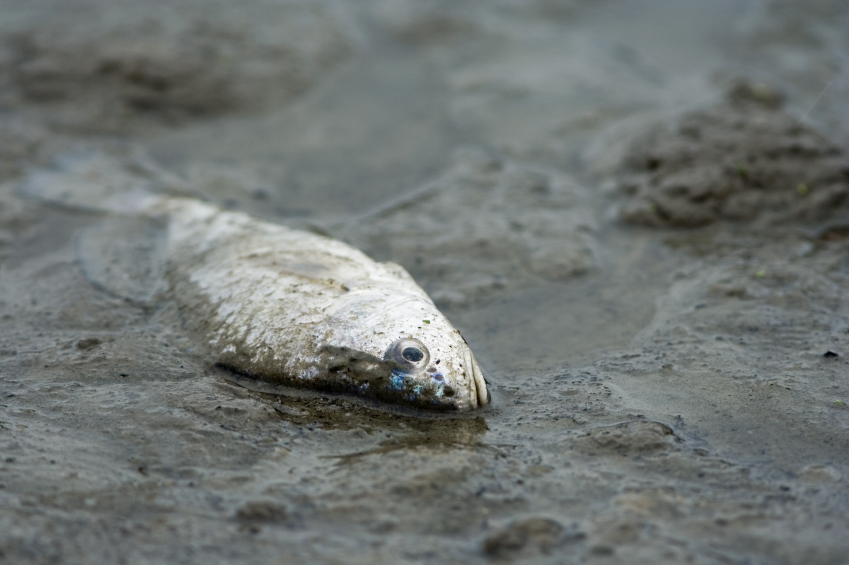Arsenic is toxic to humans, but these microbes live and breathe it
10/22/2019 / By Evangelyn Rodriguez

Researchers from the School of Oceanography at the University of Washington have discovered how some microorganisms that live in portions of the ocean where oxygen is almost absent manage to thrive. Called marine oxygen-deficient zones (ODZs), these regions are sandwiched between the oxygen-rich surface and the deep layers. In their study, which appeared in the journal PNAS, they reported that ODZs in the tropical Pacific Ocean off the coast of Mexico are home to microbes that use a compound known to be harmful to humans for respiration: arsenic.
Arsenic-based respiration: A holdover from the Earth’s early days
Scientists have long identified the presence of low levels of arsenic in the ocean. Back when life was only beginning, the Earth is said to have contained very little oxygen both in the air and in the ocean. Before plants became abundant and began converting carbon dioxide into oxygen — a process called photosynthesis — different lifeforms relied on other elements for energy. These elements act as electron receptors that allow energy to be extracted from food. The most commonly used oxygen alternatives by ancient organisms were oxidized nitrogen and sulfur – and arsenic.
Arsenic is an element that’s found in many minerals and is highly toxic to humans in its inorganic form. This semimetal is naturally present in the Earth’s crust, as well as in the air and in bodies of water. During the anoxic period, the oceans were said to have contained high levels of arsenic. Even today, groundwater in some countries are still contaminated with inorganic arsenic. (Related: Arsenic in Contaminated Water Increases Susceptibility to H1N1 Influenza.)
Some marine microbes are equipped with genes that allow them to “breathe” using arsenic-containing compounds like arsenates. Arsenates are naturally occurring — usually with iron minerals — toxic, and remain intact in water. When microbes present in aresenate-contaminated environments run out of oxygen, they activate a mechanism that turns them into arsenate-respiring organisms. This anaerobic mode of respiration allows them to convert arsenate into arsenite, a more toxic and water-soluble form of inorganic arsenic. Arsenic contaminating drinking water is often released by these microbes via this process.
Arsenic-breathing microbes still thrive in pelagic ODZs despite low levels of arsenic
According to the researchers, the concentrations of arsenate are higher relative to arsenite in many modern anoxic marine systems. However, the reason for this thermodynamic disequilibrium of arsenic species is unknown. The researchers did not expect to find evidence of arsenic metabolism in marine ODZs, which suggests that microbial biotransformation of arsenic species may be the cause of the disequilibrium.
During a research cruise back in 2012, the researchers collected seawater samples from the Eastern Tropical North and South Pacific ODZs and extracted DNA samples for genetic analyses. They identified genes that encode both subunits of two microbial enzymes, namely, the respiratory arsenite oxidase AioA and the dissimilatory arsenate reductase ArrA. These enzymes allow microorganisms to utilize arsenic for energy and are similar to the enzymes used by microbes that rely on sulfur instead of oxygen for respiration.
“Arsenic respiratory genes were expressed in metatranscriptomic libraries from the ETNP and the Eastern Tropical South Pacific (ETSP) ODZ, indicating arsenotrophy is a metabolic pathway actively utilized in anoxic marine water columns,” the researchers wrote.
They also believe that arsenic-based metabolisms play a significant role in marine environments as they support organic matter production and influence nitrogen biogeochemical cycling in modern oceans. This further suggests that arsenic respiratory pathways may be more prevalent in the environment than previously thought.
“What I think is the coolest thing about these arsenic-respiring microbes existing today in the ocean is that they are expressing the genes for it in an environment that is fairly low in arsenic,” Jaclyn Saunders, one of the authors of the study, said. “It opens up the boundaries for where we could look for organisms that are respiring arsenic, in other arsenic-poor environments.”
The researchers are planning to put together the whole genome of these arsenic-breathing microbes to determine the extent of their capabilities and the roles they play in the environment.
Sources include:
Tagged Under: arsenate, arsenic, arsenic contamination, arsenic metabolism, arsenic-based respiration, arsenite, breakthrough, discoveries, Ecology, environment, inorganic arsenic, marine life, marine microbes, Oceans, oxygen, oxygen-deficient zones, poison, research, toxic elements, toxic water, toxins, weird science
RECENT NEWS & ARTICLES
COPYRIGHT © 2017 TOXINS NEWS



















